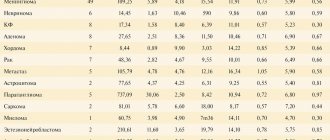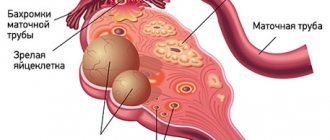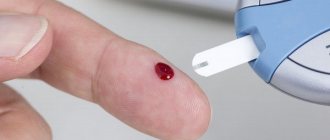To determine a large number of bronchopulmonary diseases, a diagnostic method is needed that will allow assessing dysfunction of external respiration. This will allow you to find the area where the problem arose, assess the severity of the disease, and monitor the respiratory tract.
There are several techniques that can be used for this purpose. One of the most informative and at the same time safe methods for the patient is spirography or breathing spirometry. These are similar and interchangeable terms. The only difference is that the procedure itself is called spirometry, and the result (the result obtained) is called spirography. You can have a spirography done in Moscow and get a doctor’s consultation based on its results at the Kutuzovsky Children’s Center, a multidisciplinary medical center at 5 Davydkovskogo Street.
What spirography will show
The purpose of spirography is to estimate the volume of inhaled and exhaled air, to estimate the speed of air passage through the respiratory tract during inhalation and exhalation. A number of indicators obtained during spirography will help with this. The examination is used in medical fields such as therapy and pulmonology.
With the help of lung spirography, a number of important parameters are determined that make it possible to assess the characteristics of the respiratory system of the subject, diagnose diseases and develop optimal treatment tactics in a particular case. These are indicators such as the volume of air in the lungs, the volume of air inhaled per minute, respiratory rate, air remaining after exhalation and other indicators.
Spirography and assessment of pulmonary pulmonary function helps in assessing:
- Airway patency.
- The severity and other characteristics of existing diseases.
- The presence of characteristic signs of diseases such as asthma, COPD, pulmonary spasms.
- The effectiveness of therapy and rehabilitation.
Features of the study
Disturbances in respiratory activity lead to the appearance of pathological processes in the lungs and bronchi.
In medical diagnostics, FVD is used with different types of samples:
- spirometry - measurement of lung volume;
- pulse oximetry - oxygen content in the blood;
- diffusion capacity testing - allows you to determine how well oxygen gets into the blood.
A set of tests ensures accurate diagnosis of the causes of pulmonary ventilation impairment, allows one to detect a pathological process and suggest its nature. The procedure is quick and affordable.
Indications
Spirometry for adults is prescribed for:
- Protracted cough (longer than 20-30 days) with unknown causes or after suffering from acute respiratory viral infections or bronchitis.
- Diagnosis of diseases of the respiratory system and their differentiation from other diseases with similar symptoms (for example, to distinguish between heart and pulmonary failure, in which shortness of breath appears).
- The patient complains of a feeling of tightness in the chest, shortness of breath.
- Difficulty breathing (with whistling, wheezing).
- Constantly recurrent bronchitis and other diseases, when it is necessary to understand the rate of disease progression.
- The need to correct the prescribed course of treatment with bronchodilators, their selection, and evaluation of effectiveness.
- Planning surgical interventions on the lungs.
Spirometry with determination of lung volume is also used during preventive examinations for patients from risk groups for respiratory diseases: experienced smokers, workers in industries with harmful production factors (dusty working conditions), allergy sufferers (with manifestations of bronchospasms).
Spirometry is also mandatory for patients with the following diseases:
- Bronchial asthma.
- Pulmonary failure
- Chronic bronchitis.
- COPD and some others.
Indications for spirography
Since spirography is a safe and fairly simple diagnostic method, it is widely used in pulmonology, as well as in therapy for suspected pulmonary diseases. Namely, it is prescribed for:
- prolonged cough, persisting for more than 3-4 weeks, for no apparent reason, including after suffering from bronchitis or ARVI;
- diagnosing diseases of the respiratory system by other methods;
- presence of a feeling of pressure and heaviness in the chest, shortness of breath;
- difficulties when inhaling/exhaling;
- disruption of gas exchange processes;
- audible whistling or wheezing during inspiration;
- frequent bronchitis, attacks of shortness of breath, difficulty breathing;
- suspected of having Goodpasture's syndrome, scleroderma.
Spirography is also recommended for anyone who has a long history of smoking.
Spirography is also indicated for preventive purposes. Therefore, it is included in the list of mandatory studies to be performed during the annual preventive medical examination. In addition, it is prescribed to people working in hazardous industries and children with close relatives who have chronic respiratory diseases or allergic reactions manifested by bronchospasm. It is also used to make adjustments to the treatment of bronchial asthma and COPD.
Contraindications
Spirography is a painless and harmless procedure. However, to carry it out, the participation of the subject is required - he needs to follow the doctor’s instructions, inhale, exhale at a certain speed and other actions. Therefore, the examination will be difficult for young children (under five years old) or patients with mental disorders.
Other contraindications for spirometry:
- Acute form of cardiovascular diseases (heart attack, stroke, angina).
- Significantly elevated blood pressure.
- Third trimester of pregnancy (the study may not be very informative due to compression of the internal organs by the growing uterus).
- A severe form of pulmonary failure, in which it will be difficult for the patient to follow the doctor’s instructions and perform functional tests (quick exhalation and other maneuvers).
Spirography: procedure
The technique of spirography is quite simple to perform. The patient must breathe into a tube attached to the container. When an exhalation or inhalation occurs, the bellows in the device shift, and their movement is recorded by a recorder, which “draws” a diagram - the so-called spirogram. The gas mixture that enters the spirograph is cleared of carbon dioxide using filters. Exhalation should be maximum, complete and last until a certain plateau is reached on the spirometric curve. As a rule, 3-8 breathing maneuvers are performed. Their number depends on the validity of the recorded spirometric curve. The curve is considered suitable if there are no deviations due to coughing, closure of the vocal cords, premature completion of the respiratory maneuver, insufficient effort by the patient during exhalation, blocking of the mouthpiece, or additional breathing maneuvers.
Preparation
It is necessary to obtain more accurate data when assessing external respiratory function; preparation is recommended. Here's what the doctor will advise:
- Come for examination on an empty stomach or 2-4 hours after eating (preferably a light snack rather than a heavy lunch or dinner). Avoid strong tea, coffee and other caffeine-containing drinks, alcohol, and smoking. If you are thirsty, the patient can drink a glass of water at room temperature no later than an hour before the procedure.
- Stop taking bronchodilators on the day of the test or the day before. Taking other medications should be discussed with your doctor.
- It is better not to do morning exercises and limit other physical activities.
- Wear loose clothing that does not constrict the body and does not interfere with free breathing.
- Come to the clinic 15-30 minutes in advance to restore your breathing rate and normalize the functioning of your respiratory and cardiovascular systems.
The patient also needs to know his height and weight for calculations and analysis of results.
Spirography: preparation
Spirography is performed in the morning, on an empty stomach, after the patient has rested for 15-20 minutes. At least one to two hours before the test, experts recommend refraining from smoking and drinking strong coffee.
Drugs that dilate the bronchi are discontinued in accordance with their therapeutic effect:
- short-acting beta-2 agonists and combination drugs are not used 6 hours before the test;
- long-acting beta-2 agonists are not used beyond 12 hours;
- Long-acting medications are not used beyond 24 hours.
The procedure is performed with the patient sitting. The height of the oral tube or seat height should be adjusted so that the patient does not have to tilt the head or excessively extend the neck. Remember that you should avoid bending your torso forward when exhaling. Clothing should not restrict the movements of the chest.

How is pulmonary function assessed?
In diagnostic and treatment spirometry is carried out using special equipment - a spirograph. This is a digital device that allows you to determine the required indicators in different modes and automatically calculates the necessary ratios. The use of such a device makes the procedure faster and easier compared to examinations using mechanical spirographs that were once used. The program takes into account the weight, height, gender, and age of the patient in the calculations.
During the procedure, the patient needs to breathe calmly and measuredly, and when performing functional tests, the doctor will ask you to make strong and quick exhalations to determine the volume of the lungs.
Spirometry is performed as follows:
- The patient sits comfortably, his nose is closed with a soft clamp to limit nasal breathing.
- A disposable attachment is placed on the device - a mouthpiece, which the person being examined needs to tightly clasp his lips.
- Breathing passes through the mouth. It is necessary to breathe at a calm pace for 10-15 seconds - 3-4 breathing cycles (inhale-exhale). In this case, the correct posture of the patient is important - sit upright, without straining or stretching the head and neck.
- During testing, the doctor will ask you to take deep, and later frequent, inhalations and exhalations.
Breathing indicators (air volume, air flow speed, number of movements) are recorded, and measurements are taken several times to eliminate errors due to loose contact of the mouth with the mouthpiece and other reasons.
If diagnostics with a bronchodilator drug is necessary, then after completing standard spirometry, the patient is inhaled with a special device using a special device. 20-30 minutes after this, repeated spirography is performed.
To examine lung function in athletes or when patients complain of shortness of breath during exercise, functional exercise tests are performed. The test procedure is similar to standard spirometry, the difference being that the patient exercises on an exercise bike or treadmill during testing.
If necessary, functional tests can be done during spirometry. It can be:
- Spirometry with a bronchodilator makes it possible to more accurately identify hidden bronchospasms and is used to assess the effectiveness of the course of therapy.
- A test with methacholine, which will help to definitively confirm or refute bronchial asthma by identifying the predisposition of the bronchi to spasms.
The study lasts from 15 minutes to an hour (the duration varies with different research methods). When all the data is received, the program prepares the result in the form of a graph (spirogram). If some indicators are not normal, the procedure may be repeated or spirography with a bronchodilator may be prescribed.
Spirography and spirometry
Table of contents
- Spirography (spirometry): what is this procedure?
- Indications for research
- Execution principle
- Advantages of spirography (spirometry) at MEDSI in Moscow
Diagnosis of external respiratory function
is a mandatory component of many general clinical examinations, which are carried out annually to monitor health status. For patients at risk, the intervals between diagnostic measures may be reduced.
In order to study external respiration, spirography is carried out today (including with a sample)
. The procedure is quick, safe and painless. The patient does not experience significant discomfort. In some cases, minor side effects occur: increased heart rate and tremors of the limbs, which go away on their own within a few minutes or hours.
Spirography (spirometry): what is this procedure?
The procedure allows us to identify pathologies not only of the respiratory system, but also of the cardiovascular system. Diagnosis is carried out using a special medical device. The device consists of a sensor that responds to air flow and computer systems. They determine all the characteristics important for the survey and convert them into digital format.
The spirometer records the volume of air from the lungs at maximum exhalation after maximum inhalation. When interpreting the examination results, the patient’s age is taken into account. This is due to the fact that the norm varies among people of different age categories.
Both spirography and breathing spirometry aim to measure lung function. During the first procedure, additional graphical recording of indicators is made. This is the slight difference between the methods.
Important! The quality and accuracy of diagnostic results depend on a number of factors, including:
- serviceability of equipment
- equipment settings feature
- the patient clearly follows the specialist’s instructions
- research methodology used
That is why it is very important to undergo the procedure in a modern clinic with experienced specialists. They will carry out all the manipulations and perform informative diagnostics.
It is very important to strictly follow all doctor’s recommendations! Only in this case will the assessment of lung function be carried out accurately and make it possible to make a diagnosis as soon as possible.
The tests examine the following indicators:
- Breathing rate.
This indicator represents the number of breathing movements that are performed within a minute. Normally, a person takes 16–17 breaths - Tidal volume.
This parameter determines the volume of air entering the lungs per breath - Minute breathing volume.
This indicator determines the volume of air entering the lungs within a minute. It varies from 4 to 10 liters
Also assessed:
- forced vital capacity
- forced expiratory volume per second
- maximum efficient ventilation
- air speed, etc.
Important! All indicators are assessed only as a whole. Only with a number of deviations from the norm can we speak of the presence of severe pathology. Any assessment is carried out exclusively by a doctor. We strongly do not recommend trying to diagnose yourself! You do not have all the knowledge and skills necessary for this.
Carrying out spirography today is relevant not only for therapists and pulmonologists, but also for cardiologists, allergists-immunologists and other doctors. Additionally, other examinations are performed. As a rule, only after a comprehensive diagnosis is it possible to identify even hidden pathologies of various organs and systems.
Indications for research
You should undergo spirometry to:
- diagnosis of bronchopulmonary diseases
- respiratory failure assessments
- work ability examination
- recording initial signs of respiratory disorders among workers in hazardous industries
- monitoring the treatment already carried out and the effectiveness of prescribed therapy or rehabilitation measures
- choosing the type of artificial ventilation or anesthesia before surgery
The main indications for the examination are:
- dyspnea
- feeling of incomplete inspiration and lack of oxygen
- prolonged (more than a month) cough
- acute allergic reactions
- many years of smoking experience
- neuromuscular diseases
- suspicion of bronchitis, tracheitis, bronchial asthma, etc.
- diseases of the cardiovascular system that occur with insufficient blood circulation
- chest injuries or abnormalities of its development
In addition, spirometry should be done as part of a comprehensive examination of athletes and other categories of patients.
Execution principle
Testing can be carried out in two positions: standing or sitting. During the procedure, a clamp is placed on the patient's nose, which prevents the passage of air. A special device is attached to a mouthpiece placed in the oral cavity. Spirography is provided at maximum exhalation, at rest, with increased air circulation through the lungs.
In some cases, a study is carried out with the additional use of special drugs. It is relevant when specific diseases are suspected.
- Spirometry with bronchodilator.
This diagnosis allows us to identify bronchospasm. The procedure is also relevant when treatment has already been prescribed and monitoring its effectiveness. - Testing with methacholine.
This test spirometry is aimed at identifying asthma. The examination also reveals a tendency to bronchospasm.
Diagnosis is carried out in stages. At first, the patient is in a relaxed state, and at the request of the doctor, he performs some breathing manipulations.
- Tidal volume testing.
The patient performs normal relaxed inhalations and exhalations - Determination of expiratory reserve volume.
During natural inhalation, intense exhalation is performed - Measurement of inspiratory reserve volume.
Intensive inhalation follows natural exhalation - Determination of vital capacity of the lungs.
During this test, the patient exhales deeply and inhales calmly.
At the end of the main part of the examination, the mouthpiece is removed and the patient rests. In order to eliminate errors, diagnostics can be repeated several times.
Can also be performed:
- Measurement of forced vital capacity.
In this test, the patient inhales air, holds it in, and then, with some effort, quickly exhales. Important! The duration of exhalation should be at least 6 seconds - Determination of maximum ventilation.
To perform this test, you need to breathe as often and deeply as possible for a minute. Important! At this stage of diagnosis, some side effects may occur: darkening of the eyes and dizziness - Bronchodilation tests.
For such tests, medications that have a bronchodilator effect are additionally used. They are administered by inhalation. Testing takes approximately 15–30 minutes
Advantages of spirography (spirometry) at MEDSI in Moscow
- Modern equipment.
To perform the examination, expert-class installations are used. To increase the information content and accuracy of research, equipment is regularly maintained - Experienced doctors.
Specialists in the field of functional diagnostics have all the skills and knowledge that allow them to carry out accurate examinations. Our doctors regularly improve their qualifications and master the necessary spirometry techniques - No queues and the ability to make an appointment at a convenient time.
You can get tested during our clinic opening hours. It is enough to sign up for diagnostics in advance. We do not delay in deciphering the results - Possibility of complex diagnostics.
If necessary, the patient is additionally referred for laboratory tests and other examinations. This allows you to make an accurate diagnosis in a short time - Possibility of examining adults and children.
We accept patients of all ages and provide comfortable conditions for everyone - Possibility of treatment immediately after receiving the results.
We are ready to provide comprehensive therapy for pathologies. If necessary, hospitalization in a hospital is provided
If you are planning to do spirometry (spirography) in Moscow in our clinic, or want to find out the price of the examination, call +7 (495) 7-800-500. A specialist will answer all questions and make an appointment at a convenient time.
Decoding the results of spirography
The doctor sees the results as soon as the study is completed. The data is interpreted depending on the individual characteristics of the patient: gender, age, weight. The obtained parameters are compared with the norm values. A difference from the reference values may indicate that there are bronchopulmonary pathologies, there may be oxygen deficiency in the brain and disruption of its functioning. To exclude cardiovascular diseases as the root cause of dysfunction of the bronchopulmonary system, an ECG, ultrasound of the heart and other examinations can be performed along with spirography.
Results and transcript
Immediately after spirography, including a bronchodilator test, the diagnostician receives the results and draws up a conclusion. The data is deciphered taking into account the patient’s age, gender, and weight. The presence of deviations of more than 15% in various parameters indicates pulmonary and bronchial pathologies.
Breathing rate
A functional diagnostics doctor evaluates the number of inhalations and exhalations per minute. The norm for an adult is from 16 to 20; children have more movements. The frequency is affected by body position and emotional state. An increased frequency may be a sign of tuberculosis, pneumonia, fibrosis, etc.
Breath volume
The normal value is from 0.5 to 0.8 liters. The doctor also evaluates the indicator as the respiratory rate increases. Based on the data obtained, the narrowing of the trachea is determined.
Minute volume
Normally - from 4 to 10 liters. This indicator allows you to see how the alveoli work. If breathing is frequent and shallow, then gas exchange in the body is reduced. An increase in the rate may be caused by heart or pulmonary failure.
Vital capacity
In an adult, the normal maximum possible volume of air during inhalation is 3000-5000 ml.
Spirometry in Moscow
A study of external respiration function or spirography in Moscow can be done daily at the Kutuzovsky Children's Center by appointment. Our advantages:
- Affordable spirography price.
- A wide range of services - from various diagnostic methods to consultations with doctors of various specialties.
- Comfortable conditions for examinations - no queues, no waiting, in a modern medical center.
Contact our specialists by phone to make an appointment, find out the price of spirometry for adults, assessment of pulmonary function in Moscow or the cost of other procedures and make an appointment at a convenient time.









